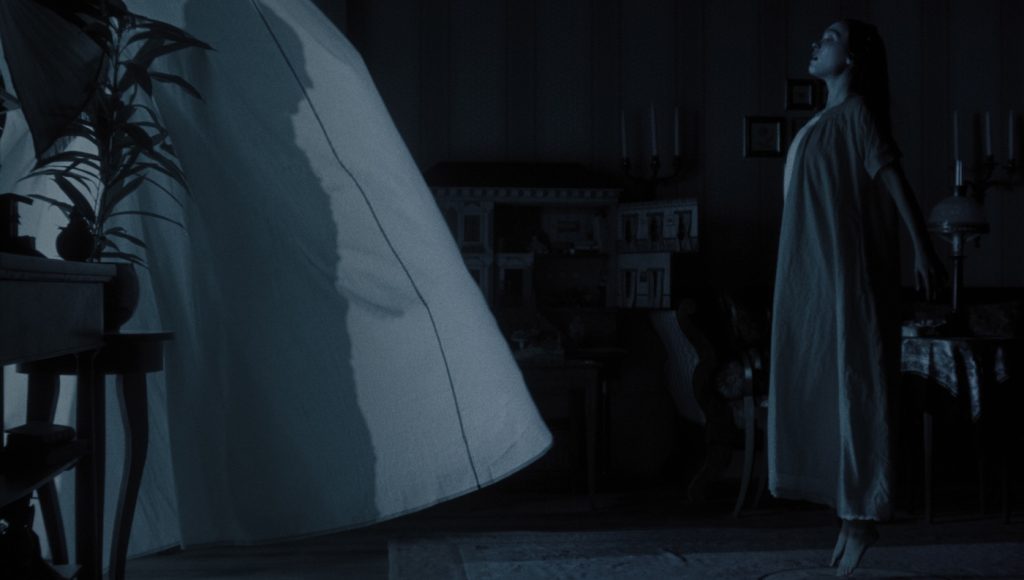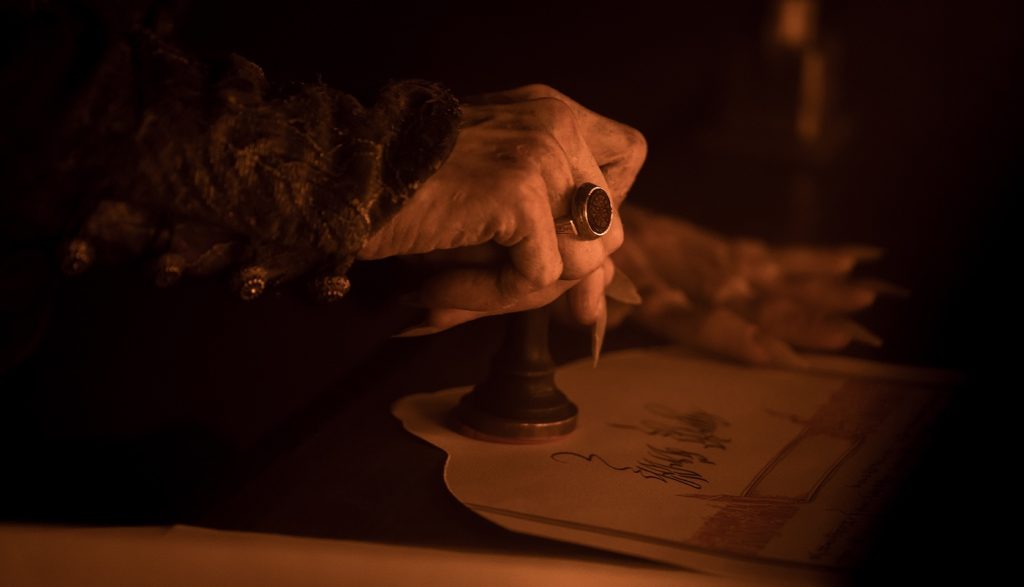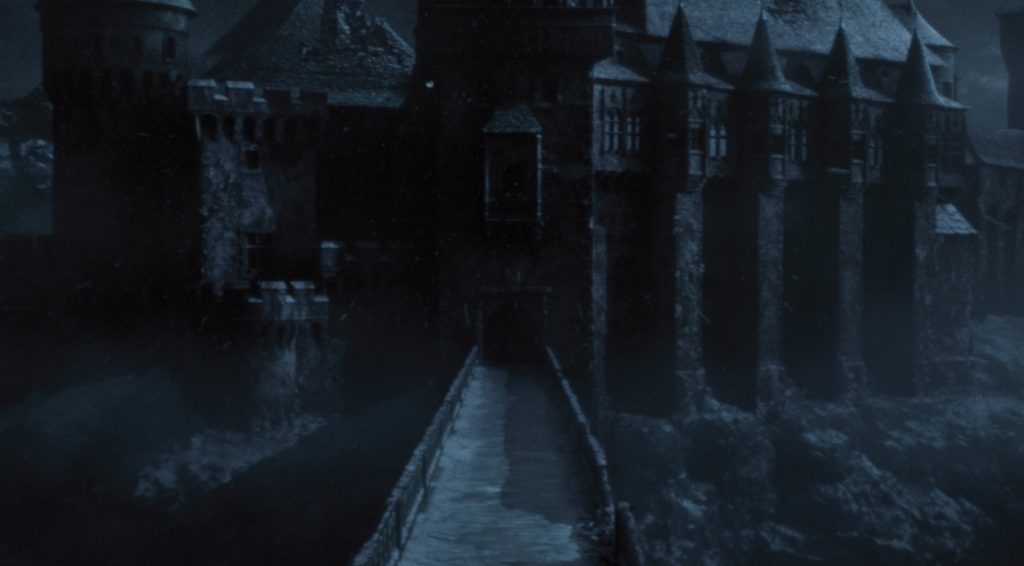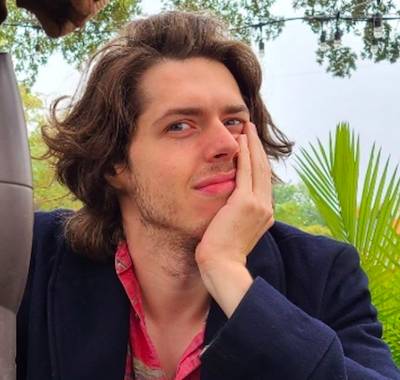Creating Count Orlock With “Nosferatu” Director Robert Eggers & Special FX Makeup Designer David White
Count Orlok (Bill Skarsgård) is a putrid feast for the eyes. In writer/director Robert Eggers’ brilliant Nosferatu remake, the iconic creature of the night is a decaying figure – nightmarish precisely because his living death was wrought with such chilling reality. Whether the Count is deep in the shadows or full view, his monstrosity remains mortifyingly intoxicating. It makes you feel even more empathy for Lily-Rose Depp’s Ellen Hutter as she becomes enraptured by the Count’s deathless spell.
The Count’s physical effect is so potent in large part because Eggers and Special Makeup Effects Designer David White didn’t approach the vampire as a monster. The duo saw the Count as an ancient character as he attempts to lure young Ellen into his twisted world, which was meticulously created by production designer Craig Lathrop and his team. Eggers and White wanted real beauty in the Count’s decay, a connection to the delights of this world that makes being seduced into the terrors of the next world so believable.
Recently, Eggers and White spoke with The Credits about designing a character that they found more beautiful than scary.
David, for Count Orlok, are there any design details audiences might not catch that speak to his history, whether it’s scars or more advanced decay?
David: No scars, but there’s a little tweak that I had with the hair – with the mustache or with a little silver. There’s a little whisper of silver that runs through the hair. It just gives him an extra element there. It heightens him a tad, but not so that it’s noticeable. His coloration is extremely pale, waxing. It does change – obviously, in the sarcophagus, where it’s really milky and dead. And then, when he’s up and about and clothed, it’s a much more sensitive approach. A very believable character, not just a creature or monster. He’s just one of the other characters.

How else did you try to ground the creature in reality?
Robert: He is a dead human. David did a lot of research on how human bodies decay. Obviously, there was a map of how much of him needed to be decayed to tell the story we needed to tell because of the slow reveal of Orlok and what parts of him needed to be preserved. But at the end of the day, he needs to be a believable dead human being.
David: I remember your notes, Robert, at the beginning, where you wanted him to have a sense of power, so the upper body is slightly more buff and slightly more sinewy. I was looking at mid-17th-century illustrations on autopsy subjects and how they used to have cadavers that were quite romantic in their look. It’s a really strange thing, but they had the muscle structure and the skeletal thing, yet they were always presented as something…not charming, but with a playfulness about them and a romanticist sort of feel. That was included in the sculpture of the body sections as well.
Robert: Maybe this says more about my perversity than David’s work, but I remember seeing Bill in the coffin, fully rendered, and just saying, “It’s beautiful.”
What did you learn about decaying bodies that informed, say, the fingers?
Robert: The whole reason why vampires have long fingernails in folklore and cinema is because, as bodies decay and the skin recedes, it looks like the fingernails are growing. And obviously, with the makeup design for Max Schreck in the 1922 film, that fingernail extension goes very far. It is something that we wanted to acknowledge in this design.
David: They say that nails continue to grow even when the body is dead for a while. There is that element. It’s incredible. They’re very delicate and quite beautiful in their spidery nature.

Credit: Aidan Monaghan / © 2024 FOCUS FEATURES LLC
What did you learn from the first camera test when Bill was fully in makeup and costume?
Robert: The first test was really the first time Bill put on the makeup when it wasn’t quite finished. Bill was very apprehensive. I know when I showed Bill the sculpture that I was proud of, he said, “Rob, this guy didn’t look anything like me when he was alive. How the hell am I going to pull this off?” And when he was getting the makeup put on him, I don’t know, David, if he was saying how annoyed he was, but he was definitely feeling frustrated. But then, funnily enough, once the mustache came on, you could see the inspiration in his eyes light up.
David: There was a definite point where everything changed. And Bill, being so used to that process of prosthetics, was very chirpy and funny. And then he started to get quite serious about it, and I’m like, Oh my God, what’s going on? Where’s he going? But he was studying it as well, and he was trying to figure out how he could use it. He was going to the lights and looking at angles and things. So, he was kind of test-running it in his own special way. By the end of it, when the mustache did go on and the full look came together, he began to turn into that character. He was very mean and moody, I can tell you that, for whatever reason [Laughs].
[Laughs] Did you do a lot of camera tests to determine how to best shoot Orlock in the moonlight and shadows?
Robert: We did a tremendous amount of on-camera tests to see how it would work in the moonlight and how it would work in the firelight. The most challenging part was that whenever you’re doing a monster, you have the most success if you follow something like Alien, where you barely show the xenomorph and keep it in shadows. You see bits and pieces. But we knew that while we were doing that, the movie’s climax would be in bright sunlight. Suddenly, this big hunk of artifice would be seen with the most immense amount of scrutiny possible. And so we definitely wanted to test a lot, and we did.

Credit: Courtesy of Focus Features / © 2024 FOCUS FEATURES LLC
What were some trial-and-error moments for both of you in that climactic scene?
David: The coloration was something I remember we discussed – where should we go with the color on this? I remember that it was a question of pulling back all those rich tones and making him slightly more attractive in a strange way because he’s in this kind of dark romance scene, and his hair is in good condition at that point. Normally, in the sarcophagus and everything, he’s covered in grease, dirt, and grime, which is great. But he’s actually a much more appealing character in that very last scene, on his best behavior.
Robert: Also, I think the more we drew attention to the decay in that setup, the more it became that you were looking at makeup instead of the character.
Robert, what conversations did you have with Bill about how you wanted Orlok to move and what you wanted that physicality to be?
Robert: The only thing I said to Bill was that I didn’t want the Max Schreck hand position with the hands clenched below the chin. We would need to find other things. We were working with Marie-Gabrielle Rotie, the choreographer, who specializes in the Japanese dance art form of butoh. And there are some male butoh dancers whom I particularly liked and thought might have some influence on Orlok. But, at the end of the day, the makeup design is so powerful, and the costume design is so powerful. Both of them are, for lack of a better word, architectural. In any case, they give him extreme lines. They tell you so much about the character, the character’s shape, the shoes, and the weight of the cloak that it influences the movement.
Nosferatu is in theaters now.
For more on Nosferatu, check out these stories:
“Nosferatu” Production Designer Craig Lathrop on Creating Count Orlock’s Gothic World
“Nosferatu” DP Jarin Blaschke on Giving Robert Eggers’ Masterful Vampire Tale Its Bite
Featured image: Count Orlok signs his contract in director Robert Eggers’ NOSFERATU, a Focus Features release. Credit: Aidan Monaghan / © 2024 FOCUS FEATURES LLC



